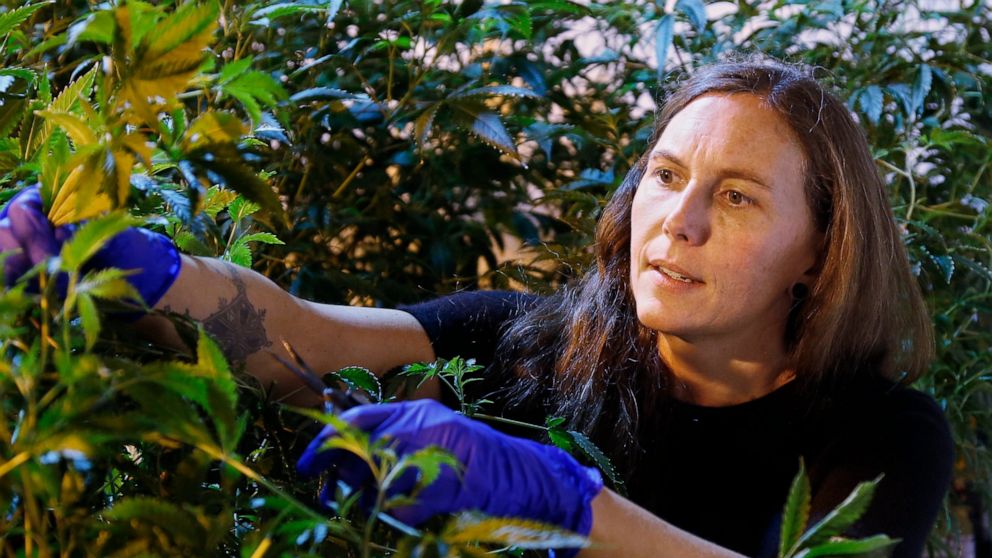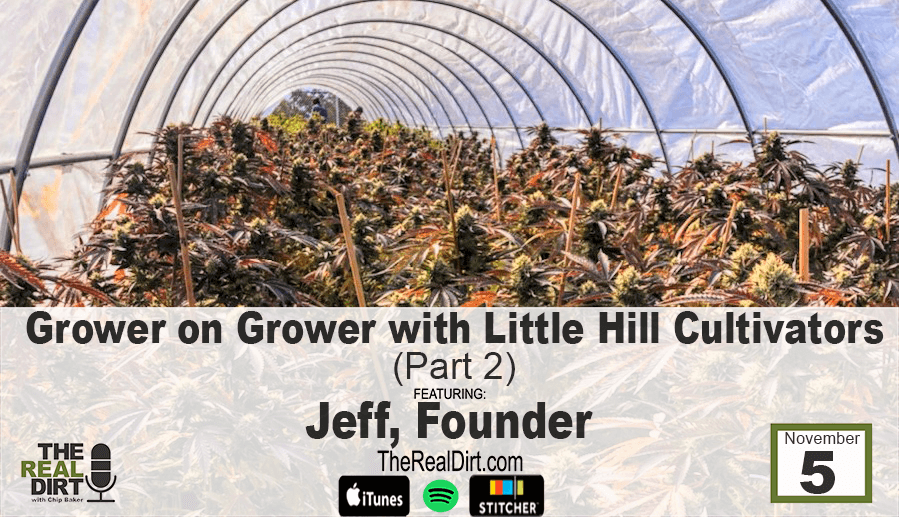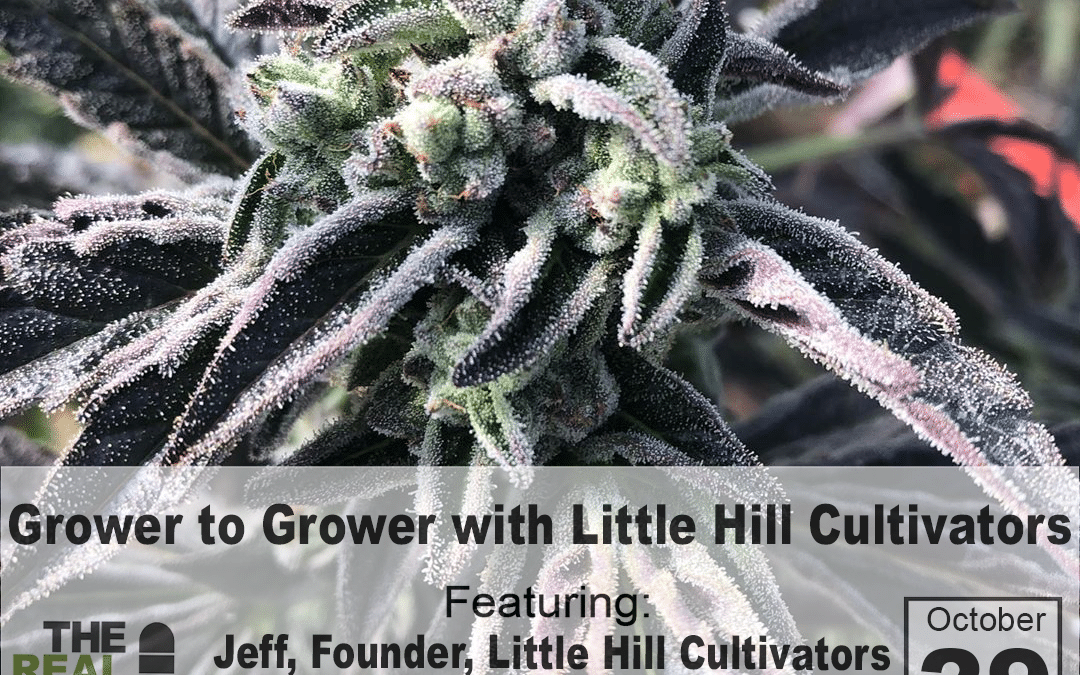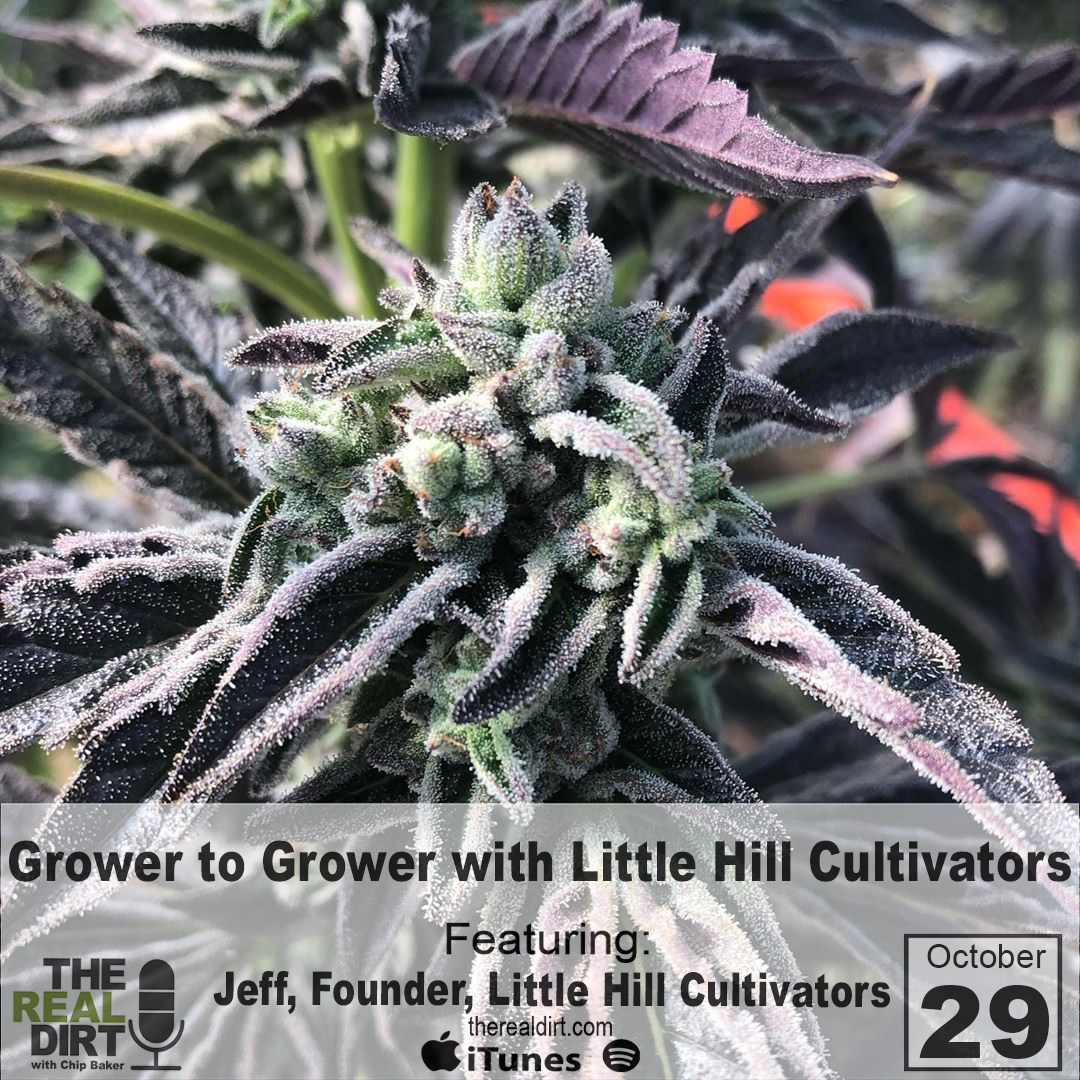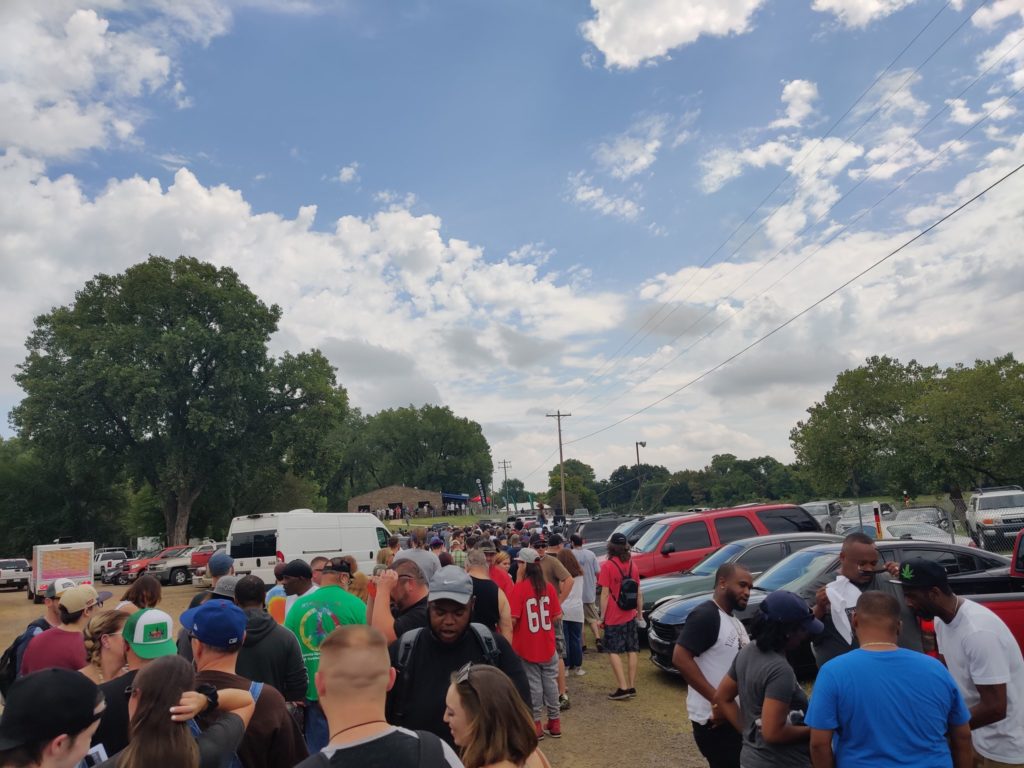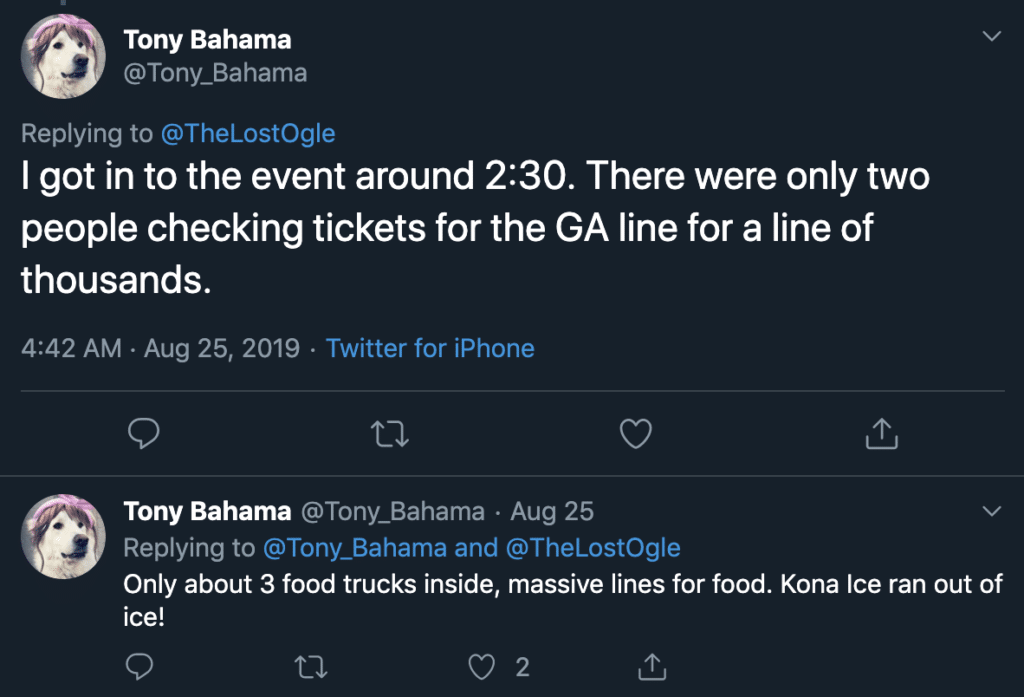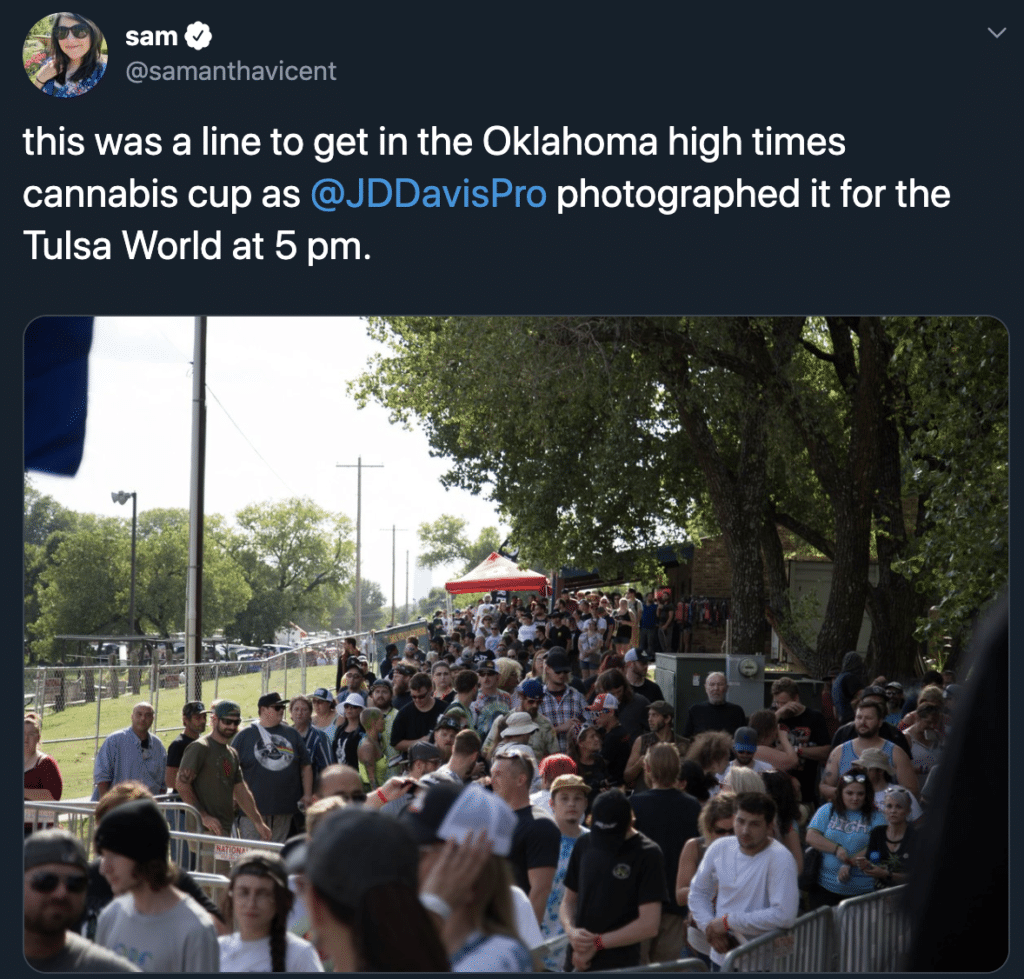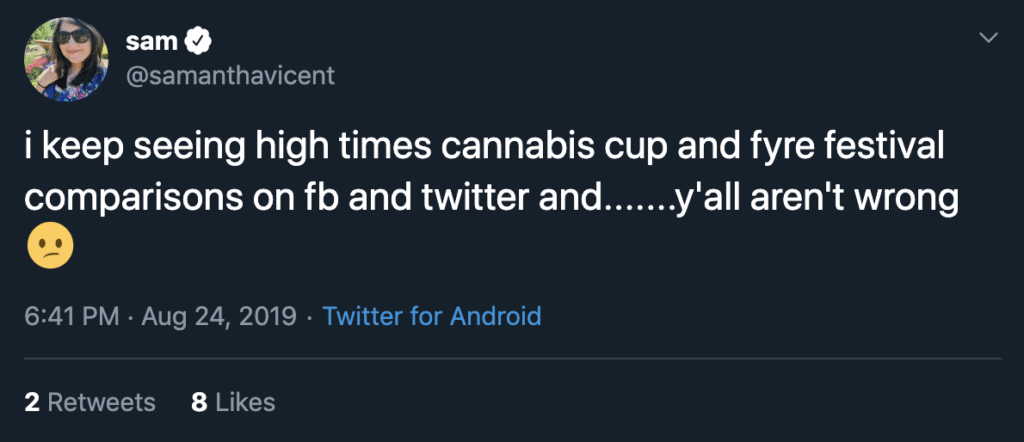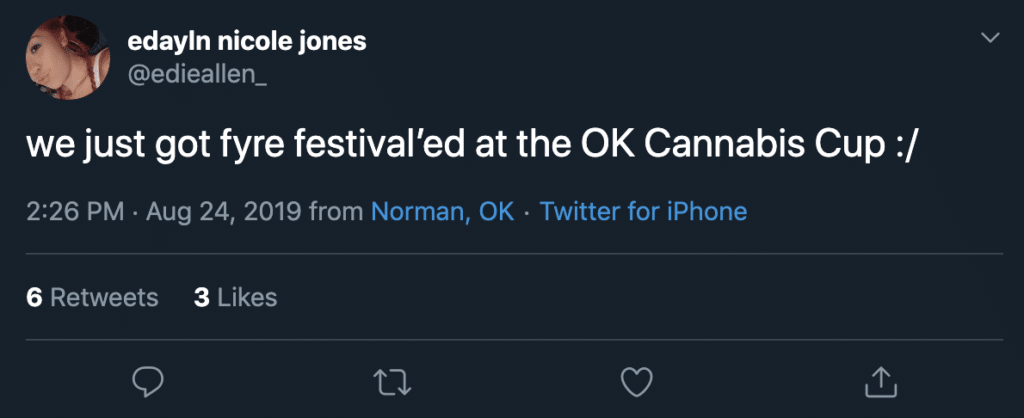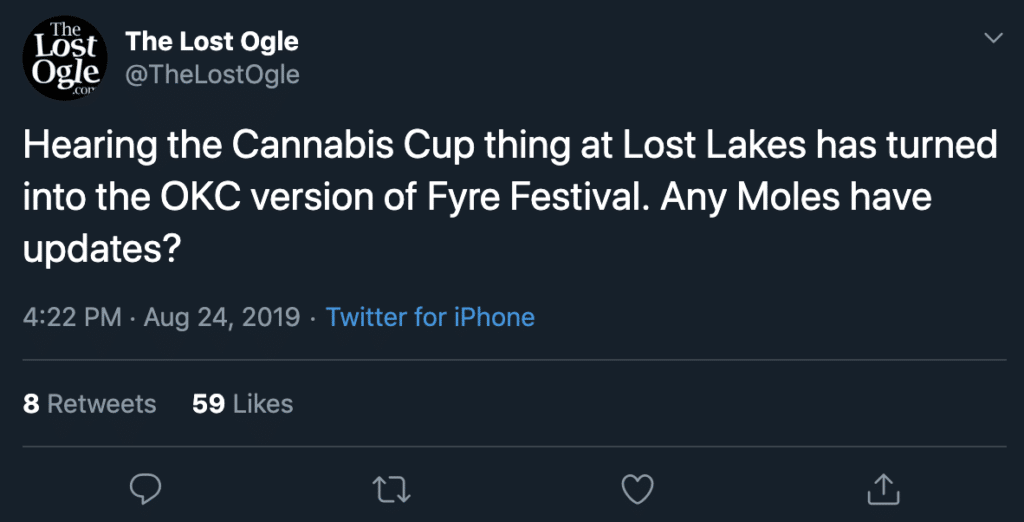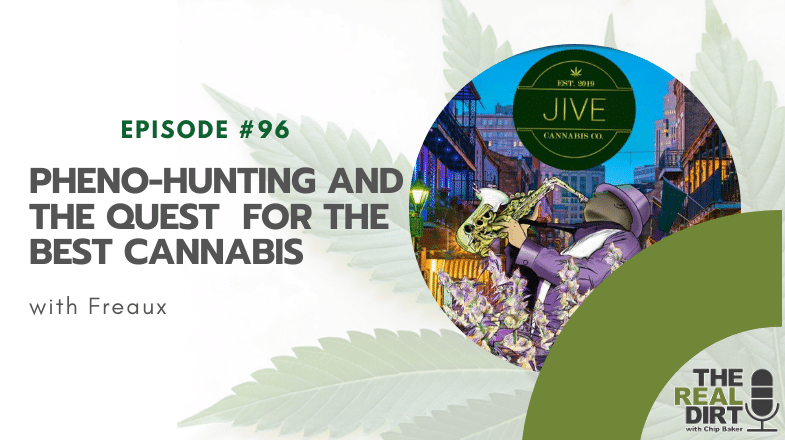
Pheno-Hunting and the Quest for the Best Cannabis
Podcast: Play in new window | Embed
Subscribe: Google Podcasts | Spotify | iHeartRadio | Stitcher | Email | TuneIn | RSS

Through decades of perfecting growing techniques, Jive Cannabis Co. is creating a product of top quality.
They enjoy spending time in the greenhouse, ensuring every plant is beautiful. The perfection of the plant is found not only in the pounds it produces but also in the nose, tricome structure, and overall beauty.
In this segment, we’ll hear from Freaux, one of the owners of Jive Cannabis Co, the importance of pheno-hunting, how they do it, and choosing the best seeds for their customers. Don’t miss out!
The state we wanted to get involved in and through a total team effort of my partners and me were able to make it happen. We all bring our little own unique things to the table to make Jive Cannabis Co. happen, and it worked out great so far. – Freaux
Download The Episode Companion For This Episode
Some Topics We Discussed Include
2:16 – Jive Cannabis Co.’s mission
10:55 – Pheno-hunting
21:17 – Choosing the best seed company
28:25 – Great seed breeders
33:46 – Seed lot and organizing
56:58 – Naming your weed
1:04:01 – Where to find them
People Mentioned / Resources
-
Sunshine Lime
-
Archive Seed Bank
-
Sunset Sherbet
-
Lemonhead
-
Lemon G
-
Cutting Edge Solutions
-
John Piccirilli
-
Dungeons Vault Genetics
-
Seed Junky
-
Koma the Grower
-
Pacific Seed Company
-
Swamp Boys Seeds
Connect with Jive Cannabis Co.
Connect with Chip Baker
Transcript
Chip: Hey, this is Chip from The Real Dirt on this episode of The Real Dirt we talk about fino hunting the genetic quest for greatness. That’s right. You know, fortunately, there’s so many seed companies that you can access these days through the internet, through some of the changes in the laws and you can pretty much have access to the greatest genetics and seeds on the planet. That’s never happened before in cannabis.
So man if you want to learn about planting seeds about pheno hunting, listen to this great episode. I’ve got my good buddy Freaux from Jive Cannabis Company, and we talk about all of it, man. We talked about how to select a seed company, we talk about how to plant the seeds, we talk about how to pick the strains, we talk about how we label them. We talked about kind of how we test them. We go through like a couple of his fino selections and criticize them a little bit and talk about the differences between each of them. So it’s a great episode, if you’re into it, if you’ve never fino hunted before, if you’ve never planted seeds out before in order to choose or select clone mother, listen to this episode and enjoy The Real Dirt podcast.
Hey, this is Chip with The Real Dirt, in today’s dirt, I’ve got Freaux with Jive Cannabis Company. How’s it going, Freaux?
Freaux: It’s going well going, how about you Chip? Thank you for having me on, man.
Chip: Oh, man. Seems like deja vu. I’ve been trying to get you on here for a while and we finally made it.
Freaux: Yeah, I’m glad we’re finally able in our busy schedules to kind of link up and get the podcast on and–
Chip: So Freaux you’re– Freaux is a longtime customer of ours with Cultivate Colorado and he moved down here. He’s one of the first wave of people to move into Oklahoma to start up, you know, a cannabis business. And we’re really excited when we moved down here because we knew that Freaux was going to bring great, great weed with you.
Jive Cannabis Co.’s Mission
Freaux: I appreciate that man, you know, coming from you, that means a lot. I’m glad that you think that we have good weed and enjoy it. That’s what we aim to do, to please and really try to put good weed out there in front of the patients.
Chip: Man, that’s a that’s the attitude that we were talking about earlier about how are you bringing great weed to the market, bringing great weed to people and not so much that like, I have great weed, you know, and it when you do it that way just takes the whole ego out of it?
Freaux: Oh, yeah, definitely. I mean, we’re all humble people. We don’t try to get any kind of egos involved. I mean, we’re just trying to come with great quality cannabis, clean tested cannabis that we can bring to the patients and have them enjoy. We enjoy good weed at the end of the day, I mean, me and my partners were connoisseurs, we enjoy good weed. We just want the patients to be able to enjoy good weed that we smoke, kind of give them like a genuine experience.

Chip: So, you’ve been involved in medical cannabis for a number of years. And you teamed up with a group of friends to come down here and start this business.
Freaux: Yeah, so I’m one of four owner operators. There are four of us that all work hard is at the full team effort to do this and make this happen. Some of my partners are originally from Oklahoma, there’s some who spent multiple years out here but it was something when we heard that there was a vote happening and there is going to be able to the possibility of medical cannabis out here. There’s some surefire you know, the state we wanted to get involved in and through a total team effort of me and my partners were able to make it happen and we all kind of bring our little own unique things to the table to make Jive Cannabis Co. happen and it’s worked out great so far. And we’re just going to hopefully continue to strive to do better and bring the best quality marijuana to the patients out here, man.
Chip: You know, and one of the one of the things that strikes me about the way you’ve built the company is you’re not a huge company. You’re not like– okay, let me step back. There’s this fear in Oklahoma that like big out of state people are gonna come in here and ruin it, right. But we’re both came from out of state. We both now live in Oklahoma. But it’s not big people. It’s small, just normal people. Right. We’re not really corporations.
Freaux: Yeah, I mean, probably the furthest thing from a corporation at the moment. And that’s kind of the way we want to keep it. I mean, we are, I guess you could say your traditional kind of mom and pop grow. We all do everything in house. There’s four of us total, and we all do it everything from the cultivation of business to whatever it takes sales whatever it takes to make it happen. Yeah, we’re definitely just a group of friends, that all have a common goal and we’re just trying to be out here and compete. And you know, it’s fortunate enough that in the great state of Oklahoma, it’s given the opportunity to do what we love, you know?
Chip: Yeah, absolutely. So, you know, the real interesting part about Oklahoma to me is there’s a lot of weed smokers here, a lot of medical cannabis users. But before a year or so ago, there wasn’t so much cannabis culture, right people didn’t really have the access to the flavors, they might have been sold product, but you had no idea if it was Sour Diesel, Blue Dream, Bubble Gum, making up a name. It’s like whatever high times a month cookies was, that’s what they got sold to the level of education isn’t so– it hasn’t been, the level of cultural knowledge hasn’t really progressed, because it was such a private market state forever. I mean, it was one of the strictest cannabis law states in the country.
Freaux: Yeah, I’d say so I mean, definitely. So it’s kind of crazy though because like, we get out and we’ll go to [inaudible]
or go to like sessions or [inaudible] be along with other patients. And there is like, a, definitely a big interest. And there’s a lot of people who are learning, but there’s also a lot of people who do have an interest and, you know, with the internet and social media and kind of being able to, you know, follow different things. There’s a lot of interest, and a lot of people out here are receptive to it. And I know people out here do like, good pot. It’s one of those things where, you know, there are a lot of people who are still kind of learning or whatnot. But the interest out here is huge. And, you know, there’s a lot of people out here who know their stuff. I mean, there’s quite a few people out here, you’re not going to be able to pull the wool over their head. I mean, they’re going to know if you don’t have, you tell them it’s something that’s not what it is or you’re probably going to call you out in or not wanting to buy it.
I feel like there is a lot of culture starting and I’d say so with started with Oklahoma to been interested in weed before this happened and then a lot of people come in from other states where it’s been either medical or recreational we’re coming in here and kind of adding to that and kind of making Oklahoma its own unique place and I think it’s awesome where it’s heading and honestly I think down the road it’s gonna be a place where there’s gonna be so much mortgage Morgan like you know, kind of melting pot kind of a cultures where it’s gonna be I think it’s gonna be great and you know what I’m saying.
Chip: I agree with you man. At Cultivate Colorado and Cultivate OKC, we see all types of growers that come in there. I really get a great gauge of what’s going on in the area. You know, as there’s regions of the state where the larger commercial outdoor and greenhouse growers seem to come from. There’s lots of mom and pops in Oklahoma City and in Tulsa. There’s lots of people who’ve just done it or just doing it for the first time or they maybe they’ve been grown in a closet for years but haven’t quite scaled to commercial operation.
There’s most people have 200 amps 400 amps worth of power that they’re working with. And those aren’t all negative things. Those are just like the reality of it. And the beauty is this, though, is there are no preconceived notions on what people should do.
Freaux: Yeah, that’s awesome. I would totally agree right there. Right. Yeah, it’s kind of just, it’s a blank canvas. And everybody that’s involved in everything right now is kind of painting its own picture. Nobody’s telling you what you have to do. It really is kind of a free market where, everybody collectively is, you know, painting the picture to make it its own. You know, there’s nobody telling you what you need to do. And it’s kind of one of the things people are actually able to come out here and you know innovate or do different things or whatnot.
Chip: One of the things that we’ve seen people do is plant all types of seeds. You know, there wasn’t a cutting culture here and we saw the same thing in Colorado in 2009 is initially they only allowed like, you know, I don’t know 70 or 77 strains into the initial database for Colorado. And so everybody had those 77 clone strains right. And nothing was new, and the laws changed a little bit or you able to manipulate the situation a little bit or maybe breeding may have happened but in Oklahoma, in pretty much plant whatever seeds you want, you can bring it into the legal system easily. And we see people planting all kinds of stuff. Unfortunately, most lovers fucking crap and then and they’ve just been sold like this bad, bad, bad seed. And that’s kind of what our topic is today. The topic for today, is pheno hunting and the genetic quest for great cannabis. Oh, wow, that sounds great, doesn’t it?
Freaux: It sure does man.
Chip: Man so one of the reasons I had you in here because I’ve seen you plant seeds, you pick great phenoes and many people don’t even know what pheno hunting or how the whole seed thing works and I really want to like start on the like super child’s style and start from the beginning of like picking us breeder buying seeds, planting seeds, organizing the seeds, track and trace in the T seeds, testing the clones, cataloging it all and like how you guys really go about like pheno-hunting.
Pheno-Hunting

Freaux: Yeah, no doubt, I’d love to do that. I mean, that’s a one of our biggest interests at Jive is pheno-hunting planting seeds finding new unique flavors, new [inaudible] profiles, and then just really just getting able to see have a good look at that gene pool man just being able to get in there and pick it because when you do get a clone, you kind of just stuck with what you got, there’s nothing you could do. But if there’s something you’re interested in, you get edible quality seeds of it; you get pretty much get to run through it and find what you want what you’re looking for. If you’re looking for smell and taste, if you’re looking for resin for the hash, there’s so much different stuff and what’s better so many different genetic possibilities where if you are actually you know, taking the time, popping the beans and seeds or whatnot you can get something special. I’ve always been a firm believer that I mean, I’ve been fortunate in some cases where you know, friends have done work and pass along you know, different genetics to me, vice versa. But to truly get some superheat fire, you got to go out there and find it. A lot of people aren’t just bestowing your blessing you with a gift. You have to be kind of proactive on it or whatnot, you know?
To truly get some superheat fire, you got to go out there and find it. – FreauxCLICK TO TWEET
Chip: Yeah, absolutely and you know man, I tell you there’s no way we can have this conversation without you opening up one of these fine jars that you pheno hunted here and rolling up a tater as we would love to but let’s examine one of these like pick one that you picked out from seed.
Freaux: So sure we have actually a Sunshine Lime, I’ve got two different phenos
Chip: Where’d that come from?
Freaux: It came from Archives Seed Bank– [inaudible] This was a fine from him. This is our number one. So the genetics on that is Sunset Sherbert times Lemonheads.
Chip: Oh man, that is incredible. Like I mean it’s both sides of the coin, it’s earthy and citrus and usually don’t find that but like is that kush like but then on the lemon too.
Freaux: I like to kind of describe it as like it’s kind of like a tropical real fruity overturn, but kind of like almost like a burnt rubber OG gas at the end. There’s Lemon G industry and the lemon tea just kind of shine in it. This is a this is another fino of it this is our number three. It’s same strain a little bit different you’ll be able to tell the nodes look of it similar but different.
Chip: It’s as darker for sure had a lot more the sherbert side to it.
Freaux: That’s I would say that’s definitely sherbert leader.
Chip: Yeah, no, it’s still good but like I see like the other one definitely the expression of the terpene expression, is greater than the other one.
Freaux: The terpene expression is greater, the nugs came out a little bit tighter. It’s just a little bit more unique to me. I mean that has a good unique smell but the number one when we were kind of you know hunting in or selecting it you know me and my partner’s, it’s a one that kind of stood off rip. It was the first one that started getting a good news, week four, week five and it just kind of came with it and there’s a couple other selections. We had another one that was pretty good as well too but out of the one in 3–
Chip: But pretty good doesn’t make it.
Freaux: Pretty good does not make it.
Chip: Yeah, so you have to be merciless in the pheno hunt, right.
Freaux: You really do and I noticed like traditional people say that you should run it twice before you give up on it. I am a firm believer in that, it’s kind of good to give it a second look but a lot of times if it was like you know super trash or first run [inaudible] on the second run and then–
Chip: Now, you should give it a second run if it’s good. If it’s bad, I just say throw it away. Unless you fucked up somehow or something wasn’t correct with it. Like you know, we’ve got some Bubba S1 from CSI right now. Same thing. You know, we grew them out and didn’t have like the best flower. And we just decided to keep all the phenos, right so we could rerun it. Yeah, right.
Freaux: Yeah. And then you know, sometimes too, you never know what happens in that thing whether it got you know, didn’t get to best real state under the lights or if environmental was bad you know an AC went out during a [inaudible] time– Maybe you didn’t give a good dry so it’s always good to give it a second look. But you can really tell and I think a lot of people too that you see around the state or even on national too, they buy a pack of beans from a breeder somebody well known. They run the seeds they get the first female they get, that’s like boom that’s it, they don’t really understand that there’s a little bit more you have to do and then you have to have kind of the courage to give it up I know growing and you love your plants you never want to like holding out and stuff like that. If you find something that maybe it’s borderline, maybe you gift it to a buddy or something to kind of hold around, and see maybe he could do something different but at the end of day if it’s not gonna cut what you’re looking for, you know, checking all the boxes that you’re looking for. It’s got to go and you move on and there’s so much variety about it, right.
Chip: You got to be pick the best, there is only one. Yeah, you paid money for those seeds, but really you paid money for the clone that you want to pull out of that seed pack. Not each individual seed.
Freaux: Exactly. And it’s like a lottery ticket, you’ll scratch off you’ll have a winner, sometime you won’t. But sometimes you find some, sometimes you don’t, it’s part of the game, but that’s kind of what you know, finding new flavors and new phenos and being able as like a company to have that specific flavor and even in depth that specific pheno kind of has it. Where it’s kind of cool to have that nobody in the world has is female except us. You know I’m saying? I think that’s pretty cool.
Chip: Man, I think this is the perfect time for two things to happen. One, for you to crack open one of those jars and let’s roll a fat one here and we’ll have a commercial break while we do it.
Freaux: Yeah, sounds good. Is there something you want to try? We got like the– we got the Kush Mints– [inaudible]
Chip: Let’s have a back to back Sunshine Lime. When we come back, we’ll talk about how to pick a seedcompany.
Freaux: Sounds great to me.
Chip: Awesome.
Hey guys hope you’re enjoying the episode here with Freaux I just want to do chat with you a minute about our organic seminar that we’re having here in Oklahoma City on March 21st It’s just next week but this episode is going to come out right now if you’re in town for the episode– for the seminar, you should definitely come and get a ticket. We’re selling compost tea brewers that man like a third the price of what they should be. And you know, we’re going to have a ton of great information. Today is going to start with us talking about soil formulation and how to make sure organic soil, we’re going to have a good provided lunch. Then John Piccirilli from Cutting Edge Nutrients is going to talk about how to make proper compost tea and in all the applications from biological life to IPM. And then we’re going to end the day at 4/20 with a roundtable on how to actually grow organic, the systems the mechanisms, the how commercial people do it. So if you’re in town man definitely get a ticket and come by and see it and hey, you know if you’re not man, we’re going to like re-broadcast has this on a webinar. So definitely if you hear this episode, and it’s not March 2020, and you want to check out the organic seminar, just look for it on on on therealdirt.com. But if you’re in town, man, definitely stop by, get a ticket. Check us out on an event bright. It’s the organic seminar, compost tea brew sessions. That’s right.
Oh, man. Well, you may quick work of that– What is it again? Which one?–
Freaux: This is actually the Sunshine Lime one.
Chip: The Sunshine Lime one. So this is the true keeper man. You say you’re gonna come to my compost tea, my compost tea class?
Freaux: Yeah, I just kind of heard you talking about that– I’m definitely interested in and I’m definitely gonna come and I heard you mentioned that John Cutting Edge is going to be there. I tell you what, I got the opportunity. He came to our facility several months back, got the opportunity to sit there and talk with him. I mean, the knowledge that was coming out of him was crazy. I was like–
Chip: So much experience man, holy shit.
Freaux: Yeah. After I had a conversation with him, I was like, when we left the conversation. The first thing I thought it was, I wish I could have recorded that. Just the knowledge coming out of his mind was great. I really enjoyed and I love to hear more about it especially you know, [inaudible] going on.
Chip: Yeah, man John is a– He almost like you tap into his brain when he speaks. It’s not like how other people talk. He, somehow has some type of psychic communication that he could you know what I’m saying? [inaudible] Like you really learn. He’s an incredible instructor a great teacher like you know, you’ve learned so much dude so much. He’s able to break it down. But yeah, so we’re stoked to have him on our organic seminar March 21st. I think this episode’s just going to barely come out in time for it so–
Freaux: Well, I’m looking forward to and you could definitely count me in there man.
Chip: Alright, so this is the Sherbert Lime?
Freaux: The Sunshine Lime.
Chip: Sunshine Lime.
Freaux 20:46
Sherbert times Lemonheads
Chip: Definitely has that citrusy, Cali O type initial taste but Mc kush [inaudible] Yeah, totally. It’s really super bowl flavors.
Freaux: Yeah, it’s got that flavor that coach your tongue. Kind of keeps it even when you’re done smoking the joint taste it right to the very end but coats your mouth really gives good flavor. very aromatic.
Choosing the Best Seed Company
Chip: A bit down to around the tip. Yeah, that’s great, man. That’s great. So man, the like, problem people– So it starts with the seed company that you choose. Let’s talk about all the bullshit seed breeders and how to avoid those first off on this pheno hunting roadshow.
Freaux: When you put it like that, I mean I know there is a lot of, you know, breeders out there who don’t necessarily like work online or like test it. They try to put stuff out really quick. Nobody really comes off the top of my head as being like I can’t really think off the top of my head is being like–
Chip: Well I don’t want to call anybody out. I’m not saying that. I’m just saying this is that everyone should know this is many people are out there breeding solely for cash, and they don’t really know what’s going on with the cannabis plant and they haven’t really picked mothers and fathers so well, they’re just plant fucking, they’re not really breeders. And so my kind of my question was like, man, how can you see it? How can you avoid it?
Freaux: So I don’t know, with me. I usually reputable breeders that are dealing with certain type of genetics that are verified and know that they actually have it. Especially breeders to who aren’t like, you know, pumping out a new line a couple times a quarter, I’m not really too familiar with that aspect, but I know like breeders who maybe do like a big drop once a year, once every other year, you know, work their lines pretty hard where you can actually get you know stable lines where you [inaudible] a bunch of herms or mutants are, you actually get there where you’re looking at your plants you have multiple plants to select from where you’re sitting there and maybe you get a 12 pack, you’re like wow I’m looking at six fairly stable female plants at hey I’m having trouble picking the keeper or whatnot
I think it comes down to I mean I know there’s a lot of talented people out there that might not have as much like following and stuff like that, but really with me, it came down to, did I have success running them before? Did my friends that are good growers have sex or success running them before? So with me, it kind of starts off with me like word of mouth kind of like–
Chip: The reputation.
Freaux: Yeah, like like–
Chip: First off look for the reputation.
Freaux: Yeah, reputation, especially too. If you have friends who have ran their gear and have had success, I think that’s a good place to start. I know there’s a lot of talented breeders out there. There’s a couple I kind of tend to go to keep really good eye when they’re doing new jobs having new stuff come out but I would say with you know, with us, we try to at least stick to like people that have a good reputation like certain genetics and those are [inaudible] genetics or working with there’s a lot of people out there, like you said, that are just taking random things, putting it together and not really working and you don’t even know if that is what it is. And it kind of really messes up the gene pool for people who aren’t doing it right, you know?
Chip: Yeah, you’re absolutely right, man. Yeah. It’s a such an odd one because people see these catalogs and they think it’s like Converse or Nike. Or they can just say, Oh, I want that and it’s gonna be exactly what the description is, or they like the name somebody put out is, you know– Have you just randomly bought seeds from anyone.
Freaux: I’ve never actually randomly bought seeds. I usually go off of like, I mean, like I said before, I usually go off for kind of like success. People have had running different packs. Especially people who are talented know what they’re doing when you get in–
Chip: This is so good, man.
Freaux: Yeah, it’s got a good little flavor. But yeah, I mean, I’ve never just randomly bought packs. I’ve had people recently like give me packs that I give a run to or try out and see what’s going on. But I know a lot of it when I try to look is like you start looking at everything’s cross and everything now on what I kind of try to do is kind of like, peel back in the lineage to try to see like, where those originally cuts came from and who bred them and the right time to start with their stuff. You know, especially people who have been doing it for a while.
Chip: What are the parents? Do you hear that?
Freaux: Yeah, I do hear that.
Chip: I have this little French Bulldog we got here Rocky. He’s always pushing me around. Hold on. Hey, he wants in on this sesh, we’re firing this joint up. Let me grab him. Rocky say how to Freaux
Freaux: What’s up to Rocky?
Chip: Yeah, he doesn’t like to be alone.
Freaux: Nah, I hear that.
Chip: That’s right, buddy. You just sit back. I’m sorry I interrupted you. Rocky interrupted us.
Freaux: No, it is all good. I kind of even forgot. [inaudible]
Chip: So we got you got to look at and do a little research and see one, if they have a reputation. Two, if other friends of planted it or you know and I even like just look at their exterior of what they’re trying to sell, try to find pictures of their packaging. But then it’s like you need that that cultural knowledge like what do they have? Do they have original parent clone? Do they have original parent strains or they just have one offs or bullshit–
Freaux: Or where did these other guys sources from, you know what I’m saying?
Chip: Yeah, exactly. I would suggest people to like look through Instagram. See what was going on six months ago or a year ago and see if you can, like follow the breeding of a plant, right. Somebody’s gonna come out, you know by a strain. It’s like look them up a little bit.
Freaux: I think it’s also good too and I kind of try to do too, especially like if I you know, on vacation you go to some like West Coast states, especially California let’s go to the clubs and put your nose in a jar, like I actually go there. And check out the genetics because a lot of people see it. And then there’ll be either hype strains, or really popular strands and you know, they are warranted for the height and popularity, but a lot of people have never like either smoked them, taste them or tried them.
You do have the opportunity to travel or go to clubs where either breeders or people have different trends in the clubs go there, try them out, put your nose in them, smoke them get to be familiar with the strain to see if that’s something you even want to run. I think that’s something too like a lot of people are just picking flavors and running them and be like, Well, I didn’t like that. It’s like wait have you even tried it or even been, gotta you know [inaudible] or whatnot, it’s just kind of you’re at that point just kind of going off of like crazy names or crosses, but I think it’s good to do a little r&b and that’s why it’s good. You know, have friends that are growers or just in general make it out there and try to try different stuff and become familiar with the genetics that you’re actually buying. You know, think that’s a good place too.
Great Seed Breeders
Chip: So we’ve, I mean, both of our quests in this life is to spread great cannabis. So let’s, you have some suggestions of some great seed breeders out there.
Freaux: Yes, I do. So I’m going to tell you some people that I personally like and at Jive, the whole team likes is definitely Dungeons Vault Genetics. Dungeons Vault Genetics he’s got some great gear. He’s actually– his Grandpa’s Breath is a strain that is pretty popular for us. He has really good genetics. We actually– We partnered with them on a couple ventures actually out here in Oklahoma we’re gonna have like a whole bunch of online with a bunch of his breeder cuts.
So patients can actually see you know what the actual strain is coming straight from the breeder. It’s his genetics. It’s not something somebody else, you know, is making up or saying like that it’s actually coming from the company. I think he’s a great one to look at Dungeons Vault. Big fan of Archive, we bought a ton of archive seeds.
Chip: Oh yeah, Fletcher man he is one of the best breeders on the planet right now.
Freaux: Yeah, he’s got some really cool stuff. And you know, he’s one of the ones who has like a crazy catalogue of all that old school stuff.
Chip: You know, here’s the thing about Fletcher and this one I said, look up the Instagram history because he has been doing it for such a long time now. And man, he’s a young guy, dude. He’s a young guy. He’s been doing it for his whole adult life. And he has gathered such an awesome, awesome collection that the catalog really is crazy, right. Everything might not be available all the time and some stuff or just spurts it’s like, Oh, that one went out of favor that one didn’t do so well. But that’s what makes like his history you know? So a man except legitimate, right. That’s what makes a seed lawn so legitimate is because of the history.
Freaux: Yeah, you know, he’s a he’s another good one we’ve– He currently hunting a bunch of his packs. We like you know, [inaudible] we got some flavors from him. You know, JBZ’s has always got a bunch of interesting stuff. He’s killing it right now. Seed Junky. There’s a bunch of other great people out there that we’re trying, after medicating a little bit. I’m trying to think of all we have there so much–
Chip: You have tried some Capulator stuff?
Freaux: So we have tried some Capulator’s stuff. We actually, we had a Jungle Mac, we’ve made some really good water hash. That’s the only pack we really ran from him besides a freebie we got at the expo in Oklahoma City several months, I guess it was probably been about almost a year now. But his Mac Riddler. We ran that, you know, both of them were good plants. When we’re looking at it for like, the profiles we’re looking for. And then especially with some past companies we partnered with, they were looking at it and like Wow, those are like awesome plants are running the hash, which, you know, that’s what we ended up doing with the Capulater gear or whatnot.
Chip: Right, awesome man. [inaudible]
Freaux: I have grown some stuff in the years past. We don’t have anything from him currently right now, but he’s somebody I definitely want to run some of his packs. I was actually looking at his Instagram the other day as a couple real interesting things that I think I’m gonna reach out to. What we try to do is, we actually have like a whole set of lights that’s strictly for r&b where we, you know, constantly on a cycle going to be popping, you know, packs and beans and trying to find the most interesting flavors and he’s definitely on the list of people who are gonna, you know, go to. There’s so much. There’s so much stuff. [inaudible] We haven’t personally. It’s nothing we’ve ran. You know, he’s somebody we definitely give a try to. I just haven’t ran anything from him.
But I’m trying to think of some other people that’s kind of the main ones we’re hunting through right now. I think we have some, I think we have some Midwest Best and Green Flora, Watermelon Granita. We’re hunting we have some JBZ stuff, Koma the Grower, Pacific Seed Company. What else is there–
Chip: Any cookie stuff?
Freaux: We don’t have any cookie stuff right this second that we’re hunting. I mean we do have some of their you know, strains from the past we’re hunting some old Cali connection pack some SVOG and some time trying to find you know some old school. OGs, I’m trying to think off the top of my head we have some exotic genetics that we’re hunting, he has some really solid gear, [inaudible] up in my head well I–got some dying breed seeds, some Ozzy– There’s so many more I’d have to blow out my phone, but there’s a ton of different stuff that we’re given a run to right now.
Seed Lot and Organizing
Chip: When you’re planning out like, Okay, so what’s a typical seed lot for you? Let’s start right there at the beginning you decided to buy your seeds, you got your seeds, how many seeds you plant now?
Freaux: So We usually like to do in the like the five pack range. Right now, we’re trying to find like a vast variety of different flavors. So we’re usually just getting like one pack of flavor which usually it’s 10 to 12 seeds we’ll go ahead, we’ll germinate the seeds, you know, some stuff has a really good germination rate makes it to the dirt, some stuff doesn’t but, we’re doing about you know, 50 to 60 at a time and then from there that actually make it into flower. I mean, you’re gonna weed a lot of stuff out in beds as you know, either male or crazy to form a new users we and then–
Chip: So that’s 50 or 60 seeds of one type? Did you just plant a pack when you pheno hunt–
Freaux: Usually right now we’re just doing a pack at a time–
Chip: To see if it’s worth it.
Freaux: Yeah, to see if it’s worth it. You know, something if I might give it a second try if we didn’t find anything. We’re going to try to start doing bigger pheno hunts have like one strand. Right now. We’re just kind of trying to find like a big you know, variety of stuff so we’re just kind of seeing when what happens with that. Sometimes you’re successful sometimes you’re not but–
Chip: You can’t always get a winner.
Freaux: Yeah, you don’t always get a winner you definitely don’t.
Chip: Right. It is kind of like the claw machine though. Right. Like you’re going for those nice pair Ray Bans in the back. Right But you don’t get it, you know, said you get a key chain. Yeah, so you’re managing 50 plants though at a time, so it might be like five packs, or yeah, maybe more.
Freaux: Yeah. So we actually the way we kind of have our like room staggered right now we actually have like a small hunt going in and each one of our rooms and we actually just wanted a huge pheno hunt which was, you know, much bigger than we’ve ever done before. Especially out here, you don’t have like a limitation on plants or anything. So you can kind of just really run through pheno hunts and stuff like that. Which, it was a lot bigger than we normally would generally go on. But I would say something for us that’s manageable with the space we have and actually just strictly keeping up with it. Because sometimes you’ve got so much stuff going on, it just becomes, too much to deal with everything else going on in life and deepen, you know–
Chip: Oh, it’s hard, man. It’s hard to keep it all organized. So how do you how do you do it, man? How do you track and trace it? How do you how do you organize it?
Freaux: So basically, with us, we’re just basically label each one of the pots. You know, pretty much when a seed goes–
Chip: You label the actual pot?
Freaux: Just to tag, well sometimes, but you know, just like a tag on the plant, you know, seed to sale system and stuff like that everything has like a little tag on it. So it’s just like instance Sunshine Lime one, I’ll just have a little tag on it or whatever. And then– But ends up turning into like a mail or something that just doesn’t make it you know, it gets axed out or whatnot. And yeah, pretty much we try to keep we’re trying to get better organized right now it’s just kind of real low tech, pretty much write it down on a piece of paper to know that we have. We tried to like taking notes if we can, if we remember, like, you know, what was really good and like vege maybe something to flower.
Chip: We always do something like this? Yeah, like a, like a board setup. We got a white board set up with some and we just start taking notes on the whiteboard.
Freaux: Yeah. And that’s, that’s we just recently got whiteboards that our facility so we’ll probably put them to use like you got him right there. But um, yeah, pretty much just labeling them and just trying to keep up with them and then you know, try to take notes of stuff that– We try to throw the plants into our, you know, whole program, just right off– Give it like our feeds and our temperatures and throw them in our rooms are actually flowering in keeping the same environment even in like an r&b room so we can see if those genetics actually make it in what we do. So if we run it in our setup and it doesn’t like like we’re giving it certain, different variables [inaudible]
Chip: That bomb threat Bubba is a matter of fact, we’re talking about extremely hard to grow, right. Doesn’t produce much, but like, if you like, do it just right, like the buds are great if you do it wrong. They’re just leafy can be and as doesn’t have a taste at all. You know, it’s, I mean, it’s all weed doesn’t act the same.[inaudible] grow the same.
Freaux: And that’s very true right there.
Chip: Yeah, it’s a living breathing plant and every single seed is different and that’s why we pheno-hunt. You should not buy a pack of seeds, plant them out and pick one or pick them all as your clone mothers, right it’s just not it’s not the best way to do it, right. You got to try it out–
Freaux: Exactly so like what we’ll do is we’ll just take the actual from seeds grown in the flower room and make sure we get cut–
Chip: From seed you throw it in the flower
Freaux: Yeah, okay, well we’ll throw in the flower–
Chip: I’ma see got too many people like you know say the that they throw the seed away and take it like Fletcher from Archive as a matter of fact he says that he throws the seed away and just takes a cutting right and then flowers the cutting.
Freaux: Yeah, I mean, that’s one way to do it. I mean, I I think with us reason why we do it is just for time because you want to see is it gonna be something– Sometimes that’ll take just like a few extra weeks where sometimes you don’t have those weeks and you’re just kind of trying to get it done and get it quick so as–.
Chip: If you plant a seed on the same day, you take your clone for your crop, you can stay on that same pattern.
Freaux: Yeah, definitely. So yeah we would just throw it in there let it flower see if we’re gonna keep it where some cuttings behind and then we’ll either like [inaudible] you know those cuttings or just keep floating from that and then obviously if it’s something we’re not going to keep maybe we’ll give it a second run but– And there are also cases to especially when you go in these big hunts and tags fall out or get lost you know, the new thing that a lot of people are doing now is a whole revege. I mean–
Chip: That’s not new– I’ve been doing that one for years–[inaudible] Oh, this is so good. Do we ever have it?There’s a bottom left out there in the field.
Freaux: And just to me, I mean, I’m learning stuff. You know, every day I just recently in the last year learned about the whole revenge just nothing I knew about whatsoever.
Chip: You got any revenge secrets? I’m interested since it’s new to you. Maybe you got different approach.
Freaux: I don’t have any revenge secrets. It’s something that I’m just kind of learning and bettering myself. But it’s something where you know, something if we cut doesn’t make it or you know, just any, you know, little thing happens where you don’t have a gun and you get it mislabeled and we’re gonna, you know, try to do a revision, it’s gonna be harder to grow up. So make something as I do, I could let you know how it went,
Chip: You know, people I’ve had people complain and tell me it doesn’t come out. Right, but I’ve done it. I’ve had to do it many times over, you know, 30 years ago and gotcha. And yeah, man, pinch off all the bugs try to leave as much leaf is possible. Switch to that high nitrogen batch fertilizer, it veges back easily. It might take a month or so for it to get normal leafs, but it absolutely will come back.
Freaux: And that’s awesome. And that’s, that’s something that, you know, we’re gonna play around with if it comes down to that, you know, yeah, yeah, you just have to.
Chip: Yeah, I mean, that’s the back. That’s what you shouldn’t do, because what you should do is label the pot, labeled the plant labeled the soil and try to keep up with it. And then if like one of the three labels washes off, or there’s still, you know, one of the three labels left,
Freaux: And you know how it is, I mean, anything.
Chip: It is man enough, so I have seen it, man, I’ve done it. You know, not all keep trying, but Okay, uh, writing on the side of the pot, that works great except with the pots is touching another pot, then it can get wiped off, you know, over time, even if it’s a sharpie. Right and that, you know, SD one, you look at it eight months later after the sun has hit down is like, is that a DB?
Freaux: Yeah, that type. Yeah, exactly. We’re kind of dealing with some of that right now. Like looking like a two or three, you know?
Chip: Yeah, we’re just started looking at Baker’s medical, the clone nursery. My wife, Jessica operates in Oklahoma City, he’s just looking into getting a label, like a printed label maker. So that we can keep things organized even more so than we do because we write all the labels out by hand right now. And I mean, they’re going through 3000 cuttings a week, they can definitely need a label maker.
Freaux: Oh, yeah, they will make that’s a lot right there.
Chip: Yeah, totally. But it’s important. You got to keep everything organized. You know, when you’re clone nursery like that’s, you know, clone nurseries have a couple, a handful of things that fail for them. They give out bad genetics, right? They give out bad bugs. Right? And they fuck up the labeling.
It’s important that you got to keep everything organized. – Chip
Freaux: You think something and it ends up being that little surprise something else?
Chip: I mean as long as it’s good no big deal, but like if it’s some experiment, you know, then it’s— [inaudible]Yeah, totally. Hey man, I think this is a great time. Take a break. Let’s uh Hey, let’s roll up that other SL two there and self three SL three. All right. Hey, we’re gonna take another break. We’ll be right back real dirt Baker and fro.
And we’re back. Had to get some peanuts and cons, a little snack. Freaux rolled up get another large medical marijuana delivery device. So, you guys a soil grower, soilless growers.
Freaux: Ah Coco.
Chip: Oh, yeah, you use my product growers.
Freaux: We shared it.
Chip: Yeah, man. You know how you like it.
Freaux: We love it. We love it.We switched over to it a while back. It’s been great. Plants have looked healthier, so much cleaner product and some stuff we’re using before. Doesn’t come wet. So dry. Don’t have all kinds of stuff growing and some you know what else coca? No,
Chip: You didn’t use peat before, right?
Freaux: I did not.
Chip: Yeah. And were you a little leery about having a coco peat blend,
Freaux: Just something I wasn’t familiar with. And it’s kind of one of the things and I know us we kind of fall into that stuff too. Even though we like to try new stuff and experiment you get kind of creature of habit. So when something’s working good, it’s kind of hard to, you know, make the switch, but when we did, it’s been great.
Chip: Yeah, absolutely. People talk to me all the time about it because you know, I’m a cocoa guy. 100% Man, I am four years straight cocoa like a proponent and I still think that’s the best way to grow the planet and for production. But that’s a whole nother story but man, it’s hard to get that shit right. When it’s straight cocoa it’s hard to get it right and the P just makes it easier. right hands down. I like I started looking at people around me crushing it with these blends of cocoa and P man I just I just just realism hit me. It’s like fuck, dude. Pete Absolutely works. I had to bite some of my swallow some of my previous said words. But a man blending in peat with coco with the right ratio really makes perfect growing medium.
Freaux: I would definitely have to agree. We’ve been definitely pleased with it. Yeah, and
Chip: Yeah, and how many?plants you guys plan up normally when you plan up a plant, I mean plant you use the product.
Freaux: So normally we go through our rooms we have tons, not a ton, but we have several 20 light rooms and normally do about 205 gallons. apart so that’s pretty much almost a full pallet roughly 60 bags ish, we usually like right there maybe right there at a couple bags. But um, that’s usually about where, man though
Chip: Now, I built this product. I built it out of us because I wanted people recognize the problems people were having when they were planting up cannabis when they were buying soil. Tell me what you noticed the first thing when you went to plan up those first 200 pods?
Freaux: As far as just in general?
Chip: In general about the soil.
Freaux: That’s super heavy. I mean, it’s Yeah, I mean, it’s tiring after you get through the first.
Chip: Yeah, it’s tiring right the first time you do it, and that was that’s that’s one of the things that you know, I really wanted to focus on is have the right moisture content in the bag of potting so when you get it, so the growers are like is really light. Yeah, really, really, truly right. You can pick up like four it’s four bags at a time, right? You
Freaux: When we we switched over that was a thing because sometimes we have to carry carry bags long ways and then you know, loading and unloading it but like, Oh wait, you know instead of one I can pick up two at a time as
Chip: Well getting that moisture level right to also like solve the other problem people have with with getting potting soil and bring it into indoor environments.
Freaux: That was the thing with some other brands out there. It’s hard man–
Chip: I’ve been making so like most of my adult life, it’s hard to make potting soil without bugs. But man, I don’t see any in my current product and haven’t seen any and–
Freaux: I can tell you right now that was the biggest thing for us was the cleanliness of it. You know, that’s something I know y’all pride yourselves on as far as the way you know, you know, practice as far as the way you make it, store it, you know, that type of stuff, but that’s the thing. We never see any issues were in you know, previous years and stuff like that or you know, previous times You know you get those little things but I think you’ve done a great job of mitigating all those issues that come with that type —
Chip: Thanks man. I really did build it because I wanted the best product on the market for shipping, for picking it up, for application and for interaction with people, for interaction with the plant. I wanted a high performance potting soil that the plants really took off immediately, you know– I asked Fletcher good friend of mine, right with the Archive. I asked him like what’s– where he just gave me some advice years ago, right when I had bad potting soil. This was maybe 10 years ago, it’s like man, people want to plant in their media. And when they pull out it just like the roots just blow out and they just take off immediately and that didn’t happen with this batch of soil, right and because I will had problems with it, those problems with the compost, there’s problems with the nutrient delivery, right? It wasn’t the best potting soil. I thought about that forever. It’s like Yeah, when people plant up in your potting soil, they’re gonna immediately like the next day go in and want like, you know this, Oh, moment, right. and that’s what I really tried to deliver with growers right the growers HP and I think y’all doing [inaudible] Well man I tell you, this a number three–
Freaux: What do you think?
Chip: It has a softer taste, but I think it actually, like smokes a little bit better, right. It’s smoother, right. We’ll see as we get down here on the road, but the the, I’m not saying the flavor went away after the first like, second or third puff of the original one. But this one seems like the flavors holding a little longer.This one also like It smells more like it tastes.
Freaux: Yeah I got you.
Chip: Right. Where the other one, it. It tastes more of the earthy cushy side. No, I’m sorry, it tastes, it tastes, smelled more of the earthy cushy side and had a really good citrus flavor.
Freaux: And I mean, that’s what I’m saying, you know, back to we’re kind of talking about what you know, and sometimes there something that you just don’t want to let go, you know, and that’s kind of where we are with.
Chip: I get that.
Freaux: I think they’re both, you know, good enough to keep around. Yeah.
Chip: Yeah, absolutely. But they’re so closely related, though. It’s hard. And it’s going to end up in my experience ends up being like, oh, which is the better grower. You know, which one’s the highest producer? Which one looks the best which one’s the easiest to grow? Which one’s the easy to vege, does often went out in a case like this
Freaux: And I’d have to agree.
Chip: Right. It is a shame though because, you know the first one we spoke up it was the true hybrid, right and you could taste you know all sides of the plant it was fully, full flavored you know, kushy too citrus. Yeah.I have this the other the other plant though is its man the Roman The air is different. Yeah. Right at you know, it almost Tingley like pepper citrus Petrus orange pepper orange tree pepper Arn. Right. You know, it’s totally a different vibe. It’s like you’re giggling you got a smile, you know, so I thought dude, but it’s hard to keep them both together, right?
Freaux: Yeah. For sure.
Chip: Sometimes, you just have to keep them and it’s the number one and two pheno. And we see that number one and three pheno right. And we see that all the time with stuff like Gelato 33. You know are 33.
Freaux: I love Gelato 33, the creaminess–
Chip: Yeah, totally man, creaminess. And, you know, or, man. What’s the good does he do the great does he do?
Freaux: I know there’s so many good dish so many good ones,
Chip: Man, like 22 that’s all I was gonna say. But 22 yeah, that’s a great one. Well, that’s one people talk about frequently. And you know what we refer to these numbers as it’s just like the number of plant that you put down, right.You just got lucky. It was the number one the number three.
Freaux: Yeah, and that’s what we’re not
Chip: So do you number at 1 2 3 4 5 6 7 8 9 10 from the beginning?
Freaux: We do.
Chip: Okay, sweet. What I usually do is I like to plant a lot at once and shotgun effect a little bit. So I’ll plant like 50 or 25 of one strain and just labeled the whole flat. When they come up and I transplant them, then I’ll 12345 them. But I do it in like, Oh, I like this one the most number one–
Freaux: I know a lot people do that yeah–
Chip: Like this is number two. And it goes all the way down the line but you know what, hey, over and over again that, early like selection that mean shit. Yeah. When they’re that young, it just does not mean anything. And I’ve want a couple of times, but mostly is like, oh, the number 22 I thought it was gonna be great. It wasn’t you know, but– so yeah, then we label them. Man sometimes we’ll even relabel them again right after like we make a cut, right. Just to keep the numbers organized a little bit. Right.
So the overall notes over time might not be the best but because designations change, but we once we like make that cut into the secondary round of flowering there, they always have a set you know, they always have set, but if we might just take it right back if we like for instance if we plant out 50, 40 seeds come up and look good we transplant those out and we label them 1-40 and then we flower those out and 25 are male we just throw those away. Right, and you know mostly sometimes we’ll keep them. And the rest of them we’ll keep, we’ll decide like, four of them are good, then we’ll take those four, and sometimes we’ll relabel those two just 1 2 3 4. Cuz then you just back to keeping it like that’s the number one. That’s the number two. That’s number three–
Freaux: Kind of like what was right where it started with, you know, get in the beginning or not.
Chip: And, you know, even sometimes we’ve even kept the numbers just because like from an numerological standpoint, they were good numbers. Right, like, you know– But so like, it doesn’t have to be like the Dewey Decimal System. Yeah, right. You just have to keep it organized.
Freaux: Yeah, just yeah.
Chip: Yeah, just keep it organized. And do you do literally do it? D on your tag? Do you write the full name? Do you make abbreviations Do you do ABCD 1234. We love–
Naming your Weed
Freaux: For abbreviations. And most are sets or, you know, like, five packs or whatever, it’s all pop on the same day. We’ll just take [inaudible] like on the whiteboard, on the phone or whatever. When we started the process, but um, yeah, normally it’s all abbreviations and numbers, and then sometimes you get messed up because you’ll have some of the same abbreviations and we’ll just try to make back a little, you know, label add x or abbreviation or assign or something on it, just to keep it all, you know, separate because that’s the thing is just when you’re spending the time and effort to do this, you want to do it right. And so just whatever works, any kind of labeling that we find, you know, we can abbreviate for the Sunshine Lime, SL, and then you know, the number worked well. But, um,
Chip: Yeah, you can see some of our jars behind you, and we always just abbreviate DB, SD, G– You know we then we nickname shit too, right. Currently we’ve got the– Our current nickname of the gills nails great strain by the swamp boys wasn’t familiar with it just randomly got into it very straight great strain great strain don’t really like the name but like we always smoke it in the morning so we call it pistols at dawn but it’s spelled like flour pistols and not like Colt 45
Freaux: That’s a good one. That’s pretty great. All
Chip: That Wife High Sunset Sherbert cross we have that we’ve we’ve dubbed that Oklahoma sunset. Nice because it’s definitely an evening weed. And you know, we always you know, you’re you’re here at the ranch where we’re out here in the evenings and go for a little walk see the sunset smokes and want to find sunset sherbert Which is a mouthful. Yeah. Right? Which is a mouthful so so even though like you know at the shop we call everything by its, you know genetic history or it’s given name by the breeder and then we’ll often dub it something else. When do you feel it’s your license to rename nick name a clone or of something of that that persuasion?
Freaux: So I think that’s a pretty interesting question right there. And I’d say a lot of people you talk to would probably have like a different opinion. I know us it’d be something that we’d probably you know, want to if we were going to do that we haven’t you know, re nicknamed anything or anything like that yet or a female we select that, you know, debate a different name, just so you know, I think if that’s something we were going to do, we probably want to reach out to the breeder. Make sure it’s okay and tell them like hey, you know, give them this. prompts and it’s a word because we, you know, create the genetics or anything. We just found the pheno–
Chip: I think as long as you nickname the clone, it’s fine. I feel good about it. Right? Like, the Wife High Sunset Sherbert like it’s just a big bucket name, but like it for the geeks like us, we like okay, it’s Yes, you know? Yes, the equation that’s in there, and we want to see that but, you know, then there’s just how like, you refer to your cutting or you can refer to it in nicknames change over time, too. And, you know, we often call it sunset, but like, that’s just not quite the right designation. And so it’s hard for that one. And when
Freaux: We have a lot of like, in house nicknames we’ll, you know, dub the different females we haven’t like actually marketed or–
Chip: Put it out and that’s how this all came about. Right? Is is like designating it some name. Just to We’ve used family member names we mean any, any anything that’s that would have been
Freaux: A little inside joke about it. Yeah.
Chip: Yeah, you have to get into it and I know there’s a certain amount of science involved into it. But I mean, there really is communication with the plant and enjoying it and actually experiencing life with these plants. Like that’s the joy of it all, right. The communication, just like what we’re doing right now. It’s like when we go out in the garden. You know, like we’re looking at the plants, talking to them, asking them what they need. And you know, it’s not literal. It’s like checklist in our head, right? I’m sure you have yours, you know, walk into a room. How does it feel to me? Is it hot? Right? Like, how do the plants look? Are they you know, standing up. What’s the color of them you know, the cleanliness like all of it you know what are the problems, do they bottomed out or they not bottomed out or they crowded in, do they have as much room as there’s a big enough container and a small too small container they’re overgrown you know like whatever it is, there something the plant has to say some story every plant has to tell you, right. There’s Rocky one back in the studio, I swear, man I think he just likes to hang out here in the smoke.
Freaux: He is cool dog.
Chip: Rock is a bad ass little dog. Well French Bulldog you’ll be might see him on Instagram occasionally. You know, let him in. He’s gonna keep scratching. I really liked the like rough cut pneus of the whole real dirt. And we do a little polishing of it all but like I like to give people who like show how it happened. But you know, and it’s it’s not edited so much it is a free for all experience. And if you’re listening to this now and you haven’t subscribed to the real dirt iTunes, please man, go there and subscribe. And if you’re not following me on instagram like man, Instagram doesn’t like weed and weed education so much.
So like they don’t really show our Instagram out to new people. So if you’re not following us, please follow us on Instagram, and we’ll keep you up to date on all of the new newest releases all the private releases come in this next year. And anything cool we’re doing with classes with, you know, events, you know, it’ll keep you up to date. So definitely join us at the real dirt podcast on Instagram. Hey, for what how do we get in touch with you if somebody wants to follow you guys on Instagram? How do they do it?
Where to Find Them
Freaux: So we have an Instagram, our Instagram is jive.cannabisco and we also have like a second one kind of like a backup kind of like you said with you know it’s good to have like one or two just in case, so @jive.cannabisco or @jivefarms those both those counts are associated with us you know now would be the best way to probably get in touch with us or whatnot would probably be like, you know
Chip: Yeah, man, Oklahoma’s a great place to be. I’m glad you made it here man.
Freaux: I’m happy to be here–
Chip: Oh, dude. Totally a great spot man. And man, people like really want great, great weed–
Freaux: They really do. That’s what’s awesome about a man.
Chip: They want good weed, they might not even know they want it. They might even know that what they have is not great weed but if you see Jive Cannabis Co on any dispensary shelf, you should try it out. Personal endorsement by me Chip Baker. Whatever that means, man. So you don’t you do any trade shows? You do anything in the future like–
Freaux: I mean we’re always open to whatever seeing what’s in the area or whatnot but um, nothing on the schedule or anything. But I’m definitely gonna try to go to that little seminar y’all are put on or whatnot.
Chip: Oh, yeah, yeah, our organic cultivation seminar, March 21st 2020. In Oklahoma City, if you’re around, you should go. And if it’s after that date, man, look it up. It’ll probably be a webinar or something like that in the future.
Freaux: Sounds good. Looking forward to that one.
Chip: Man, I appreciate having you on here. Anything else we like you got like a tip for our growers out there. Some sort of tip for planting seeds or fino hunting just one specific thing. Ah,
Freaux: Man, I mean really just, I would say for somebody who’s never done it, definitely give it a try. Especially–
Chip: If you’ve never planted seeds before, plant some seeds.
Freaux: If you’ve never planted seeds before, definitely plant some seeds and give it a try, man. I think you’ll be surprised with the results you see. And it’s definitely enjoyable.

Chip: Yeah, absolutely man. Go out there, buy some seeds. Do some research. You know, really like hunt it down. The more expensive seeds generally are the better seeds just how it kind of rolls. Maybe not always, but good luck, man. Enjoy your pheno-hunt. And hey, Thanks Freaux man, we appreciate you coming here, dude.
Freaux: I appreciate you having me on.
Chip: Yeah, man, it was great. We’re gonna sit back while you guys enjoy the exit music and we’re gonna smoke another large joint here on the realtor.
Man, that was a great episode. Man, I feel like almost feel like right now even have more questions than I had at the beginning of the episode when we script this whole thing out. So we’re probably going to have to have a part three or four or two or three or four with Freaux on this whole subject. But I know I learned some stuff. I learned about how Freaux does it, and man, they have an eye for it. And it does take the eye, and it makes the experience and the ability to be able just to go out there and actually try to plant some seeds. So, yeah, man, thanks for joining me. I always am grateful that you spend your time listening to me where you could be doing other stuff.
If you’re ever in Oklahoma City or in Denver, stop by Cultivate Colorado, man, if you’re in Cultivate Oklahoma, Cultivate OKC ask for Chris or ask for Chip. Man. I’m in there all the time. Love to chat with you. And find out about what you’re interested in and what may be the next episode of The Real Dirt should be. So stay tuned. We’ve got a great season. Join us on Instagram at the real dirt podcast. Follow us on Facebook at The Real Dirt podcast. And yeah, man, definitely therealdirt.com where you can find out about all the latest episodes about everything—going on with us about all our special events. We’re having a bunch of special events this year. So thanks again for joining me and we will see you next time on The Real Dirt.
Subscribe & Review
Thank you for tuning in to this episode of The Real Dirt. Don’t miss an episode, click here to subscribe on iTunes and let me know what you love about this show.

